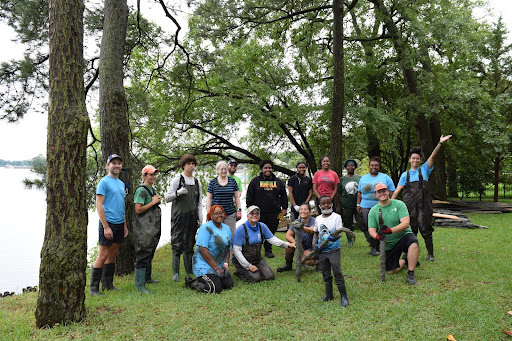restoration
April 8, 2022
Once a thriving tidal river, the Eastern Branch of the Elizabeth River became known as the lost branch when it fell from public awareness. Stemming from this lack of awareness, it also became one of the most polluted tributaries in the watershed. The Elizabeth River Project and partners have set out to change that, with public awareness campaigns and multi-sector partnerships to restore urban shorelines with native oysters. Because of these efforts the Chesapeake Bay Program now recognizes the Eastern Branch of the Elizabeth River fully restored for oyster habitat; and there have been significant improvements in water quality demonstrating that large-scale restoration with multiple community partners can restore an once dead urban waterway.
January 21, 2020
Broward County, Florida Once a part of the vast expanse of the Everglades wetlands, Broward County, Florida was first thought by settlers to be uninhabitable. Draining wetlands and building near […]
September 27, 2019
Building on the first 2 webinars in our series on gentrification and displacement that (1) defined the issues and (2) showed how to use data to track them, this webinar […]
February 19, 2019
The South Platte River Urban Waters Partnership (SPRUWP) focuses on the headwaters and the Denver metropolitan area, and consists of over seventy organizations, including Federal and state government, municipalities, universities, NGOs and private businesses, all collaborating to address the problems facing the South Platte and improve this vital waterway for current and future generations — as well as those who live downstream of Denver.
February 14, 2019
When Hurricane Maria struck in September 2017, septic and power systems in the San Juan Bay Estuary failed and crucial habitats were destroyed as had been predicted by the vulnerability assessment conducted four years earlier. Although Estuario was prepared to respond, guided by the adaptation plans established in 2015, aging infrastructure, continued development in the watershed, and intense hurricane forces multiplied the impacts of flooding and water pollution. In the aftermath of the storm, it was very clear to Estuario leaders that aggressive actions needed to be taken to increase both the ecological and economic resiliency of the watershed. Estuario doubled-down on its efforts with #EstuarioRevive, an initiative designed to implement projects to monitor, restore, and increase the resilience efforts of the San Juan Bay Estuary.
January 9, 2019
Groundwork Hudson Valley, established in 1999, is a non-profit that creates sustainable environmental change in urban neighborhoods through community-based partnerships that promote equity, youth leadership, and economic opportunity. In 2011, […]
November 29, 2018
Partnerships and strong communication between government agencies and non-government organizations are key elements to overcoming the barriers to revegetation efforts of the urban sections of the Green-Duwamish River. The Green the Green Network (GGN) was developed over the last year under leadership of the Urban Waters Federal Ambassador, the King County Lower Green River Basin Steward and representatives from Forterra and American Rivers. With the intention of formalizing a partnership with clear goals and direction, leaders created the GGN to implement coordinated revegetation efforts in the watershed.
September 17, 2018
Join the National Water Trails Learning Network to step through the phases of water trail development, discuss the challenges and successes faced when creating and sustaining river access, and dive into a case study of a successful national water trail.
September 10, 2018
Together, partners in the Northwest Indiana area are leading people to the water. The LaPorte Soil and Water Conservation District (SWCD) – established in 1937 by the Indiana Soil Conservation Act – plays a vital role in both the Trail Creek Watershed Partnership and the Northwest Indiana Federal Partnership. They offer a variety of programs that educate and empower the community to take an active role in protecting their environment. In addition, the LaPorte SWCD is involved in watershed planning, advocating and implementing best management practices within the Trail Creek Watershed.
August 16, 2018
The LaPorte Soil and Water Conservation District (SWCD) – established in 1937 by the Indiana Soil Conservation Act – helps residents of Indiana to conserve land, water, forests, wildlife and […]

